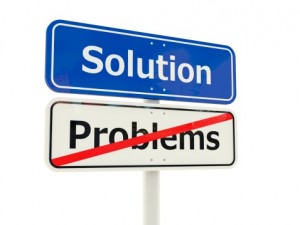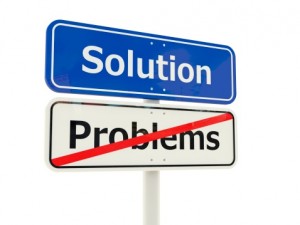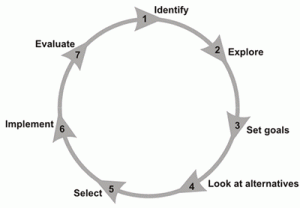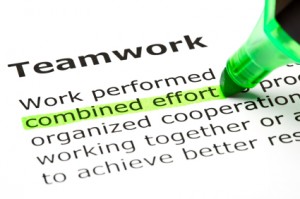So, what is conflict, what causes it and how do we best deal with it?
What is workplace conflict?
Is a sharp disagreement or opposition of interests or ideas. When people work together, conflict is a part of ‘doing business’. Conflict usually leads to lowered morale, an increase in absenteeism and decreased productivity. It has been estimated that managers spend almost 25 percent of their time resolving workplace conflicts – resulting in a decrease in focus and thus lowered work performance.
What creates conflict in the workplace? Some of the primary causes are:
- Poor Communication: different communication styles can lead to misunderstandings between employees or between an employee and manager. Lack of communication drives conflict ‘underground’.
- Different Values: any workplace is made up of individuals who see the world differently. Conflict occurs when there is a lack of acceptance and understanding of these differences.
- Conflicting Interests: conflict occurs when individual workers ‘fight’ for their personal goals, ignoring organizational goals and organizational well-being.
- Scarce Resources: too often, employees feel they have to compete for available resources in order to do their jobs. In a resource scarce environment, this causes conflicts – despite awareness of how scarce resources may be.
- Personality Clashes: all work environments are made up of differing personalities. Unless colleagues understand and accept each other’s approach to work and problem-solving, conflict will occur.
- Poor Performance: when one or more individuals within a work unit are not performing – not working up to potential – and this is not addressed, conflict is inevitable.
Here are 13 steps for an effective problem-solving process.
Define acceptable behaviour Defining what acceptable behaviour is, is a positive step in avoiding conflict. Clearly defined job descriptions inform employees of what is expected of them, and a well-articulated chain of command that allows for effective communication will help avoid conflicts.
Keeping the peace When people work together in groups, there are bound to be occasions when they disagree and conflicts arise in the workplace. Whether these disagreements become full-blown feuds or instead fuel creative problem solving is, in large part, up to the person in charge. You can do a lot to set the tone.
Pay attention to the emotions and how they influence Realise that emotions are part of the workplace and that negative emotions can fuel the conflict. Acknowledge the emotion and then determine its source – is it based on a bad experience or a past interaction that may be influencing the current situation?
Identify the issues
- Be clear about what the problem is.
- Make sure everyone involved knows exactly what the issue is and why they’re arguing.
- Remember that different people might have different views of what the issues are. (Allow each person to clarify their perspectives and opinions, giving equal time for them to express their thoughts)
- establish a time limit (say, 5 minutes per person)
- Separate the listing of issues from the identification of interests (that’s the next step!).
- Don’t force solutions before the situation is clear.
Understand everyone’s interests
- This is a critical step that is usually missing.
- Interests are the needs that you want satisfied by any given solution. We often ignore our true interests as we become attached to one particular solution.
- The best solution is the one that satisfies everyone’s interests.
- This is the time for active listening. Put down your differences for awhile and listen to each other with the intention to understand.
- Separate the naming of interests from the listing of solutions.
Break the problem down into smaller pieces Solving a problem can sometimes seem overwhelming and impossible. To decrease anxiety and think more clearly break the problem down. Identify the different parts it consists of. Then figure out one practical solution you can take for each of those parts. Use those solutions. They may not solve the whole problem immediately. But those solutions can get you started and might solve a few pieces of the it.
Select the Best Solution What’s the end result, from each party’s point of view? One trick: Try asking each participant to write down their vision of the perfect outcome, and then read each piece out loud without identifying the author. This way, personal prejudices and separate agendas can be removed from the mix.
List the possible solutions (options)
- This is the time to do some brainstorming. There may be lots of room for creativity.
- Separate the listing of options from the evaluation of the options.
Evaluate the options
- What are the pluses and minuses?
- Separate the evaluation of options from the selection of options.
- What’s the best option, in the balance?
- Is there a way to “bundle” a number of options together for a more satisfactory solution?
Document the agreement(s)
- Don’t rely on memory.
- Writing it down will help you think through all the details and implications.
Agree on contingencies, monitoring, and evaluation
- Conditions may change. Make contingency agreements about foreseeable future circumstances
- How will you monitor compliance and follow-through?
- Create opportunities to evaluate the agreements and their implementation. (“Let’s try it this way for three months and then look at it.”)
Follow Up Following up after a problem is solved is a great way to build confidence with team members. It lets them know that you took their issue seriously and that you are going to be available to them if another one comes up. Following up is essential to making sure all parties involved were happy with the outcome, while at the same time building up trust in the relationship between those involved. Make sure you always follow up.
Seeing a workplace conflict through to a positive resolution can be life-changing. It’s empowering to help others, and yourself, through a difficult time.
What about you? How do you tackle problems when they arise? Any tips we left out?










